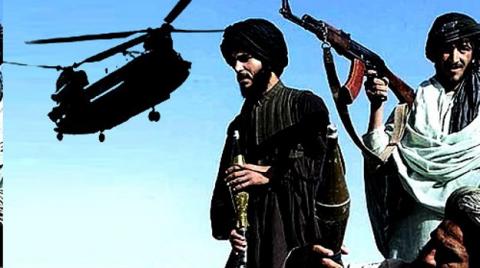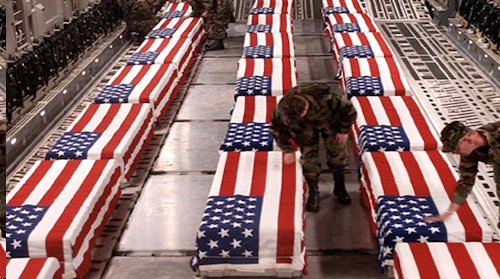Corruption, Fraud, Waste: Reflecting on the War in Afghanistan

From our content partner, New America Media:
Corruption, fraud, theft, waste. These four dull horsemen of the auditor’s apocalypse are as common as violent death in Afghanistan and as the man responsible for overseeing the United States’ $109.7 billion reconstruction effort in the country, John Sopko is as well acquainted with their depressing ubiquity.
The former prosecutor was appointed Special Inspector General for Afghanistan Reconstruction (SIGAR) by President Obama in 2012 and his caustic quarterly reports to Congress open a window onto a world in which these four horsemen have never been reined in, while cowboys run riot in Kabul.
It’s a world in which some agencies make 80% of their payments in untraceable cash, where opium production booms despite tens of billions spent on counternarcotics initiatives; a world in which Afghan colonels romp into U.S. bases and drive off with millions in stolen jet fuel, as soldiers mailwads of bribe money home to their wives.
It’s the Wild West and Sheriff Sopko is trying to impose fiscal law and order.
“I hope my legacy is that people in the military, people in state, people in aid appreciate the importance of oversight and don’t just pay lip-service to it”, he says in one interview posted on Youtube, where it garnered just 106 views. For a man trying to mop up after a war that has cost U.S. taxpayers over $1 trillion, it’s a small audience.
SIGAR's Q2 report, published on July 30, was particularly biting: “I remain unconvinced”, Sopko wrote with studied distaste, “that either USAID or the Afghan ministries are able to accurately account for the investments in health and education made by the United States and our allies”.
The quiet banality of the statement masks its brutality as an indictment, but SIGAR did not have to look far to find examples. Last year as part of a criminal investigation, SIGAR asked USAID for the geospatial coordinates of 551 healthcare facilities funded under a contract with the Afghan Ministry of Public Health (MOPH).
Eighty percent of the data they were given in return was inaccurate or inadequate: where satellite imagery should have shown an Afghan health care center, instead it showed the Mediterranean Sea; Turkmenistan; Pakistan; or 89 locations showing no physical structure at all within half a mile of the reported coordinates.
Sopko wrote with an almost childlike simplicity to USAID’s acting administrator Alfonso Lenhardt in June this year, requesting proof that the centers existed: “To provide meaningful oversight of these facilities, both USAID and MOPH need to know where they are…”
USAID’s Larry Sample, told NAM: “It has been a common practice for Afghan ministries to use the location of a village center as the coordinates for a facility, particularly when there was limited access to GPS technology. USAID is taking advantage of technological gains and is currently working with the Ministry of Public Health to provide map support and to update older and sometimes inaccurate GPS coordinates.”

The development agency hasn’t been alone in feeling the crack of the inspector’s whip however; the Pentagon, private contractors such as Dyncorp and Afghan ministries and more have come in for sustained criticism (not least over the construction of a 64,000 sq. foot command-and-control centre at Camp Leatherneck that was never used; by the time it was finished, the military surge it was built for was over and when SIGAR visited, they found banks of folding chairs still in their plastic dust sheets; the 10,000 ready-to-eat meals stacked in it had to be incinerated; the smoke of their 1,250 calorie packets drifting over Helmand).
Sopko blasted the waste of $36 million and this May wrote to the Secretary of Defense: “We recommend that DoD incorporate into the DoD Financial Management Regulation... a clear statement that taxpayer funds should not be spent when they are no longer needed, merely because an official does not want to go through the process of requesting their rescission.”
SIGAR has secured $794 million in criminal fines and cost savings from 865 investigations thus far, recommending suspension or debarment of 343 individuals and 307 companies from receiving U.S. government contracts. Yet it is clearly an uphill battle; one rendered more laborious by the fact that bribing foreign officials is not yet a criminal offense in Afghanistan.
The sheer waste and lack of clarity is not just a fiscal issue: Sopko had earlier also raisedPentagon hackles with a report highlighting the lack of visibility on just how many Afghan soldiers were available for duty. As SIGAR put it: “Neither the United States nor its Afghan allies truly know how many Afghan soldiers and police are available for duty, or, by extension, the true nature of their operational capabilities.”
With $60.7 billion of taxpayer's money having been spent on the Afghan National Security Forces, it is an astonishing failure. In April Sopko sat before the Subcommittee on National Security’s Committee on Oversight and Government Reform, where frowning Congressmen took it in turns to grill this bearer of bad news.
One exchange was particularly telling. Congressman and former iron worker Stephen Lynch: “With the amount of money we’re spending over there, it’s a disgrace that we don’t have an accountable system. I think a lot of this money’s being stolen... Maybe it’s just come to the point where we just stop all the funding.”
SIGAR John Sopko: “My only concern about that – and I understand your frustration— [is that] the reality of the situation on the ground is, if we stop funding, probably the Afghan National Security Force will collapse; the Afghan government will collapse, and the entire $1 trillion investment will be lost.”
Absent the strategic decision to write Afghanistan off as a balance sheet impairment, what Sopko can do is urge conditionality: much of the aid provided to Afghan ministries to support army and police forces originally was given with no strings attached. That has now changed and as SIGAR puts it in one chapter of the Q2 report: "Attaching strings is often a good idea"; again another truth most observers would have hoped was by now self-evident.
What has $1 trillion bought meanwhile? Marginally improved metrics on poverty and health care (although Afghanistan remains the 10th poorest country in the world)? An estimated 26,000 civilian deaths? A state in which the Taliban can still attack the capital with ease? British government minister Rory Stewart declined to comment for this piece (Stewart walked across Afghanistan in 2001) but in a TED Talk in 2011 he crisply articulated an important point.
“If you put $125 billion a year into a country like Afghanistan where the entire revenue of the Afghan state is $1 billion a year, you drown everything. It's not simply corruption and waste that you create… You co-opt almost everybody. Even the aid agencies, who begin to receive an enormous amount of money from the U.S. and the European governments to build schools and clinics, are somewhat disinclined to challenge the idea that Afghanistan is an existential threat to global security.”
As a boondoggle, as a black hole into which taxpayer money could disappear for so little strategic reward, Afghanistan takes some beating. And for attempting to clean up, after the sheer witless panache with which taxpayer fat has been splattered with Afghan blood across the Hindu Kush, leaving a cortege of crooked contractors in the war's wake, John Sopko – even if he is just doing his job - deserves the utmost credit.
From our content partner, New America Media































































































































































































































































































































